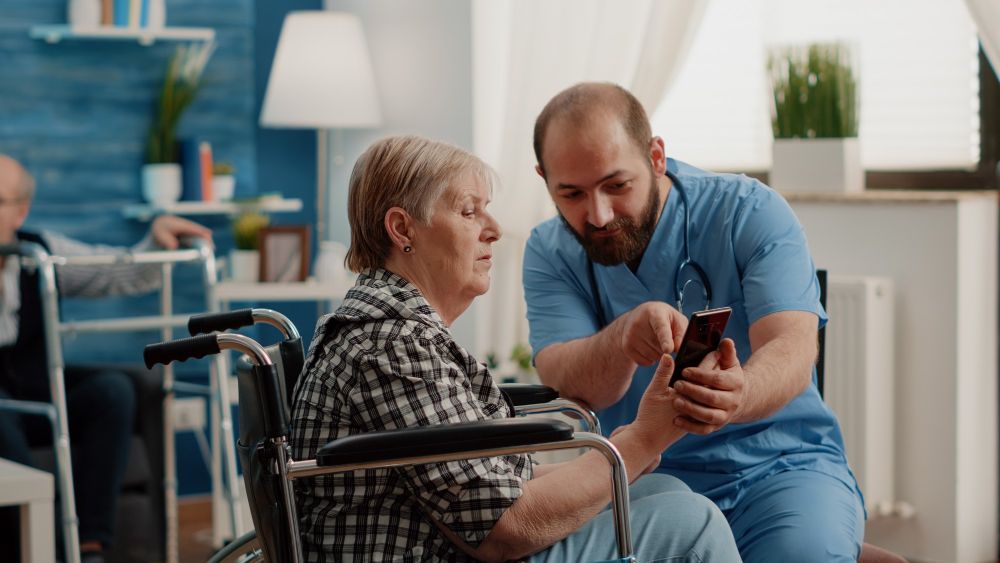
Rethinking technology for the elderly in Spain
By ITU News
For the past six months, 77-year-old Paco has shared his home with a small robot that looks like a countertop coffee machine. Three times a day, it alerts him with acoustic and visual signals about the pills he needs to take.
The pensioner living in Barcelona, Spain, suffers from memory problems after a bout of COVID-19.
As his lapses became acute, Paco’s family looked for a solution to control his medication intake. They found it in a device developed by IMA Contigo – meaning Intelligent Medication Assistance“With You”.
The robot’s sensors make sure Paco takes his medication correctly and notifies family members if problems arise.
Digital solutions focused on older persons have surged in recent decades, addressing the growing demand for tools adapted to the needs of ageing populations. The United Nations estimates that by 2050, one in six people will be over age 65, compared to one in 11 in 2019.
The robot dispenser’s creator, Roger Guasch, says the idea came to him after his mother was diagnosed with Alzheimer’s disease and mix-up of pills landed her in hospital.
Despite various physical and cognitive challenges, elderly users can benefit greatly from new and emerging technologies. “Older people are becoming more and more autonomous and adapting to new technologies,” he says.
Smart nursing homes
Ageing is a global challenge, with the COVID-19 health crisis underlining the stakes of this new demographic reality. In regions such as southern Europe and North America, the virus had a devastating impact on nursing homes.
In the Galician town of A Estrada, in north-western Spain, local health authorities decided to adopt new tech when they renovated the town’s public nursing home.
Last October, the town launched a “smart nursing home pilot project” that incorporates, among other technologies, the use of sensors in rooms to detect if a resident has fallen or goes to the bathroom more frequently at night – a symptom that could mask a pathology.
Automated monitors also help track residents’ health status.
“During the COVID-19 pandemic, the vulnerability of nursing homes became clear,” explains Sebastián Pantoja, director of strategic programmes at Televés, the organization behind the project.
The company also led the deployment of the Activage Project, a European initiative to implement active and healthy Internet of Things (IoT)-based solutions across the continent, especially in areas with ageing populations.
The tech knowledge acquired during the project helped Televés update caring services, explains Pantoja, with healthcare workers also benefiting from the focus on “digitalization, prevention and early detection of risks.”
The rise of the ‘silver economy’
Healthcare is not the only sector where tech innovation can improve the lives of the elderly. Finance and entertainment are other burgeoning areas of the so-called “silver economy.”
The Global Coalition on Aging uses this term to describe the purchasing potential of the over-60 age group, a market worth around USD 15 trillion.
Internet use among older people has climbed over the last decade, especially in developed countries. Still, many have trouble interacting with digital products, whose design often fails to consider ageing users.
To improve accessibility for older people, innovation consultancy Opinno identifies three concrete strategies for product developers:
- add touch screens that enable easy resizing of letters and icons;
- deploy voice-activated technology to facilitate device interaction; and
- enable hybrid experiences that include non-digital alternatives.
More resources, more autonomy
Innovation can be costly. Roger Guasch’s biggest challenge was designing the IMA robot from scratch.
“You have to invest a lot of money to get the physical product,” he says.
The Active Assisted Living (AAL) Programme, supported by the European Commission, seeks to bridge this gap by funding projects to improve the quality of life for older adults in Europe.
In Barcelona, Paco’s son Victor says his father was not very happy when they brought the IMA robot home.
But little by little, the device became a real and familiar help. Today, Victor says, the robot “complements” care by the family and helps maintain an independent life for Paco.
Image credit: DCStudio via freepik
